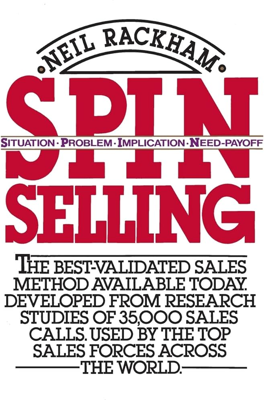Obtaining Commitment: Closing the Sale
Obtaining Commitment: Closing the Sale
Neil Rackham's research, particularly through Huthwaite, initially focused heavily on the "closing" phase in sales, traditionally deemed critical for sales success. Existing literature and training heavily promoted various closing techniques, often suggesting salespeople should frequently employ these to clinch deals. Common techniques included:
- Assumptive closes: Proceeding as if the sale has already been agreed upon.
- Alternative closes: Presenting multiple choices, both leading to a sale.
- Standing-room-only closes: Creating urgency by suggesting limited availability.
- Last-chance closes: Pressuring with potential price increases.
- Order-blank closes: Starting to complete an order form prematurely.
Subsequent research by Rackham questioned the effectiveness of these methods, especially in larger, complex sales scenarios. Surprisingly, data revealed that heavy use of closing techniques often resulted in fewer sales.
Key Insights from Huthwaite’s Research:
Success Relation to Closing Frequency: Contrary to popular belief, fewer instances of closing attempts in sales calls tended to correlate with higher sales success.
Professional Buyer Reactions: Professional buyers, often familiar with sales techniques, tended to react negatively towards visible closing tactics, interpreting them as manipulative or underhanded.
Sales Outcome vs. Closing Techniques: In experiments, such as the photo-store study Rackham mentions, closing techniques appeared effective in quick, low-cost sales but counterproductive in higher-value sales, suggesting a negative relation between the aggressiveness of closing techniques and the size/value of the sale.
Effective Strategies for Obtaining Commitment in Larger Sales:
Instead of closing aggressively, successful salespeople in larger deals focused more on:
- Effective Investigating: Thoroughly uncovering and understanding customer needs to build strong selling propositions.
- Demonstrating Capability: Clearly showing how their product/service meets identified needs.
- Summarizing Benefits: Concisely recapping the discussion to reinforce key benefits.
- Proposing Appropriate Commitments: Suggesting logical next steps that aim for the highest realistic commitment from the customer, thereby moving the sale forward without demanding an immediate decision.
Conclusion: Closing vs. Relationship Building
In Rackham’s view, especially in larger sales, the aim should not merely be about closing a single sale but rather about initiating and nurturing ongoing relationships. His studies advocate for a more consultative approach, emphasizing need discovery and tailored solutions, rather than aggressive closing tactics often taught in traditional sales training.
